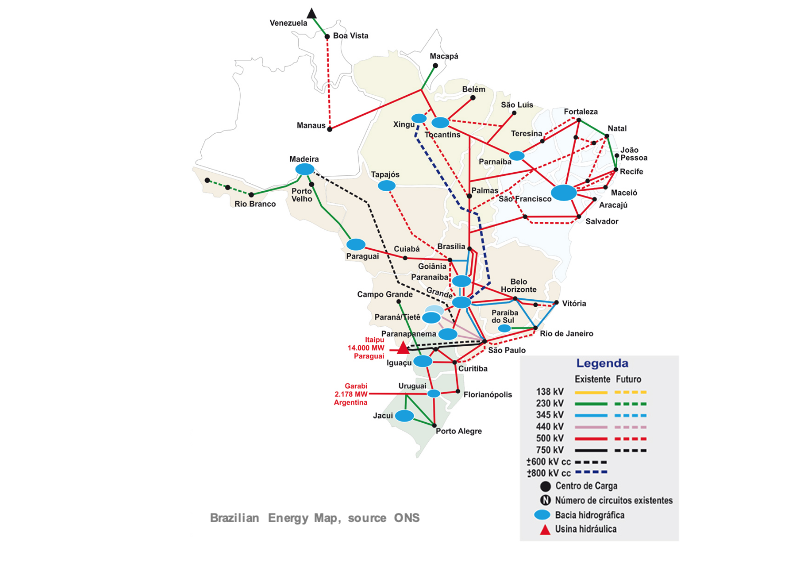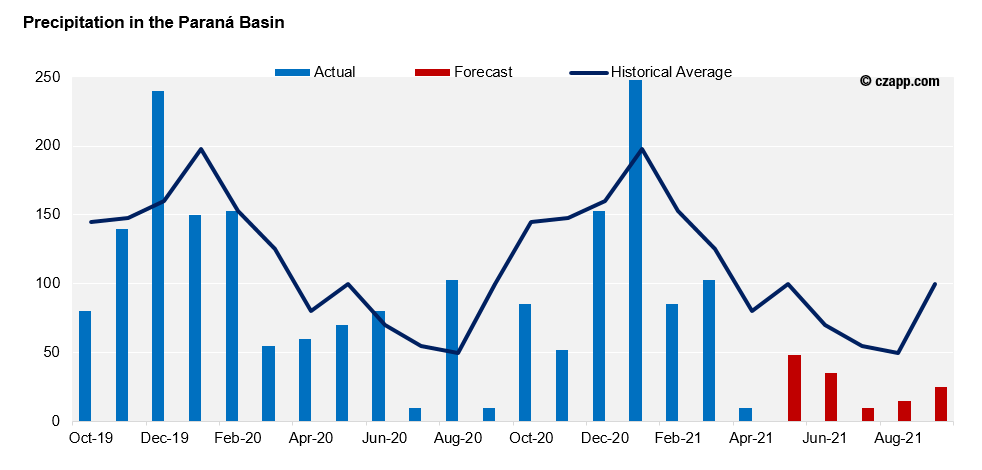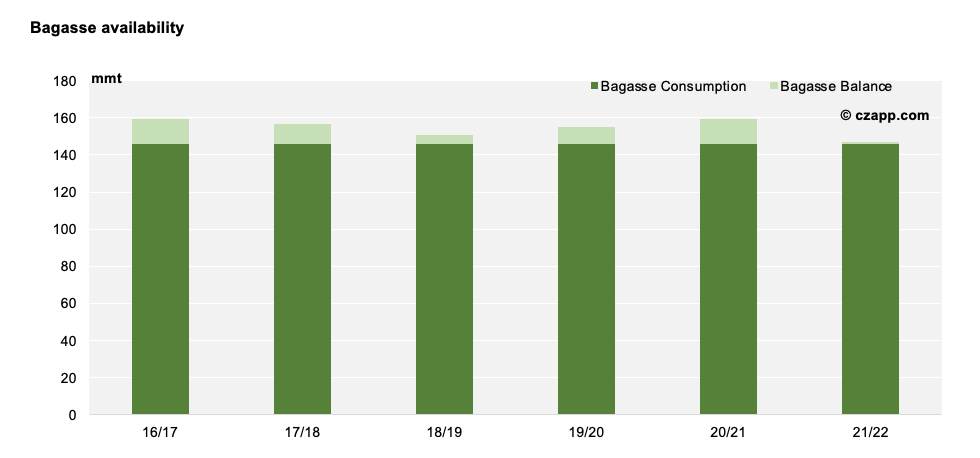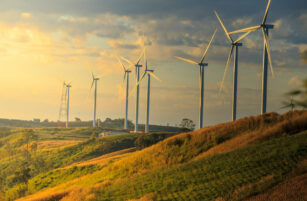- Lack of rain leads to a water risk alert issued last week.
- Energy prices continue to rise and are expected to reach the PLD ceiling.
- There may be a lack of bagasse for cogeneration.
Alert: What is the Concern?

- Last week the SNM released a water emergency note calling attention to the scarcity of rain in the Paraná basin.
- It represents no less than 76% of all storage in the Southeast.
- From June to September, below-average rains are expected in the region covering the states of São Paulo, Minas Gerais, Mato Grosso do Sul, Paraná and Goiás.
- The problem is not the low rainfall in the coming months (something expected for the dry season, winter), the warning comes because the CS region has been recording rains consistently below average since 2019.

- Something that is now reflected in the level of reservoirs and raises awareness of possible risks of electrical rationing or even water rationing in some cities.
- With the dry season, the trend is that by September the reservoirs will remain at the lowest level recorded in the last 20 years.

Reflection on Prices
- Less availability of energy from hydroelectric mills means that the country is forced to rely on additional energy from other sources such as thermoelectric mills.
- This is reflected in the spot price of energy (the PLD), which has been rising since March – when reservoir levels began to fall, and the expectation of little rain was being priced.
- In addition to the increase in the price of the commodity, we also observed an increase in the value of the discount on the TUSD/TUST (Tariffs for the Use of the Distribution and Transmission System) for both the short term and the long-term curve.
- Some of the explanations for this fact range from supply and demand, increased charges, MP 998 (end of discount), to the crop failure of sugar and ethanol mills.

- Market estimates indicate that by August the price should hit the PLD ceiling – stipulated at BRL583.88 for this year.
- On the side of those who need to contract energy outside of a contract, the bill can become more expensive.
- On the other hand, whoever has the means to generate it can increase their revenue.
- Is this the case for mills with cogen?
Impact for Mills
- Today, biomass cogeneration represents almost 9% of energy generation in Brazil, with most of this percentage coming from sugarcane bagasse.
- Part of this power generation by the mills is sold in supply auctions to the Regulated Market, that is, the prices of their generation contracts are locked in and guaranteed.
- It is estimated that in 2024 the generation from biomass in the Free Market (ACL) will grow 110% due to the termination of these auction contracts of the Regulated Market (ACR).
- This means that for the most part they will not be affected by the variation in the PLD, not at least in additional revenue.
- The risk this year is on the other side.

- The dry weather has not only affected reservoirs but has affected agriculture as well.
- The CS region registers rains 40% below the average from January to May – with some places even worse.
- This is reflected in the development of the cane field, which should have at least a 10% drop in agricultural productivity, at least.
- Less cane, less availability of bagasse to be used in cogeneration.

- The estimated consumption of bagasse by CS is around 146mmt, assuming internal consumption and use for cogen.
- With the crop failure this year, the available bagasse balance is very tight – less than 1mmt, it hardly appears on the chart until.
- We know there is a risk of downside in relation to this year’s milling, especially with an even drier winter than usual.
- A crushing smaller than the currently estimated 558mmt means that some mills will have a bagasse deficit, which could impact their cogeneration commitments.
- Without delivering the committed energy, they will be forced to close the difference via PLD, which should affect their revenue generation in this cycle.










